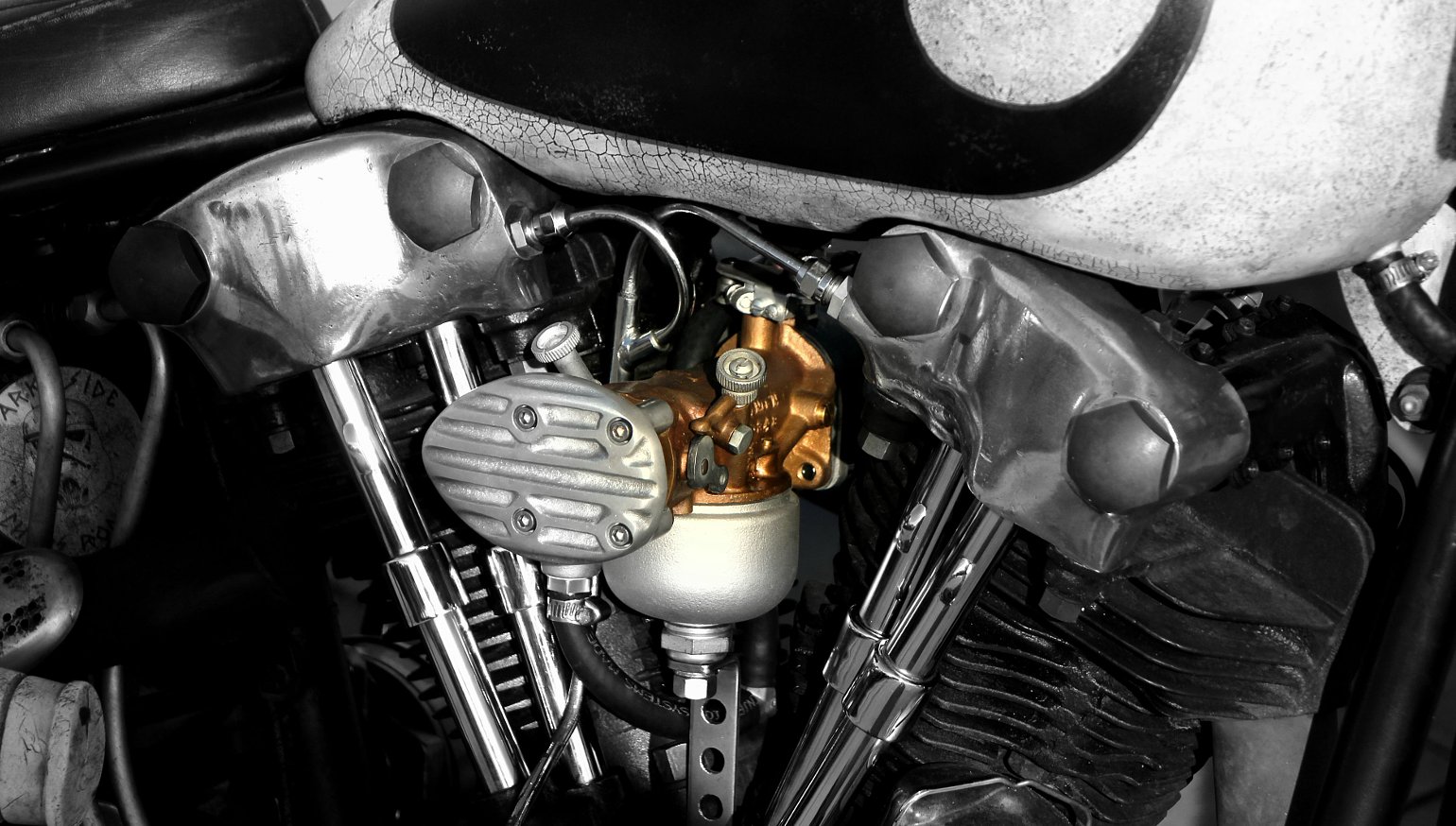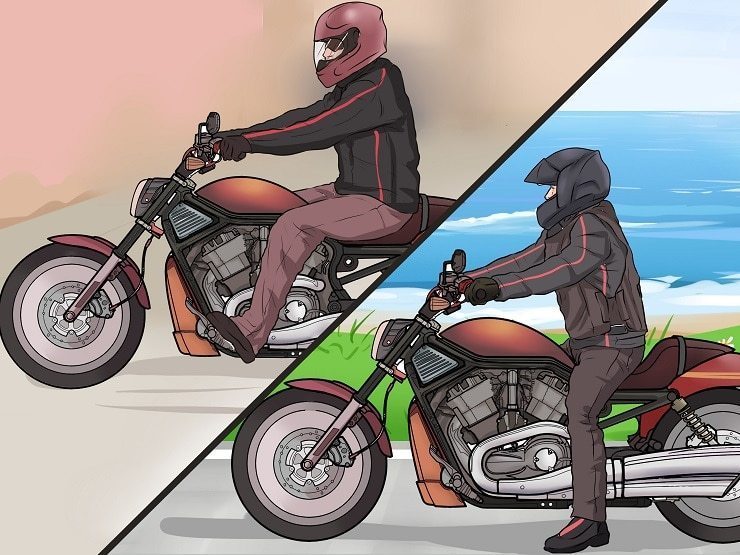
In the realm of motorcycling, the moment the engine roars to life marks the beginning of an exhilarating adventure. Whether you’re a seasoned rider or a curious novice, understanding the intricacies of starting your motorcycle is crucial for a safe and enjoyable ride. This comprehensive guide will delve into the essential steps, special considerations, and troubleshooting tips to ensure a smooth and successful start, every time.
I. The Excitement of Starting a Motorcycle: A Journey Begins
As you approach your motorcycle, a sense of anticipation builds. The sleek lines, the powerful engine, and the promise of open roads beckon you to embark on a journey of freedom and adventure. But before you hit the throttle, mastering the art of starting your motorcycle is paramount.
Understanding the Basics: Essential Components for Starting
Behind the thrill of starting a motorcycle lies a symphony of mechanical components working in harmony. The battery provides the electrical energy to ignite the spark plugs, while the ignition system coordinates the timing of this process. The starter motor cranks the engine, turning the crankshaft and initiating the combustion cycle. And finally, the fuel system delivers the necessary gasoline to feed the engine’s hunger for power.
II. Preparation for Starting: Before You Hit the Road
A successful start begins with proper preparation. Before you mount your steed, take a moment to conduct a thorough visual inspection. Check for any leaks, loose connections, or damaged parts that could hinder a smooth start or pose safety risks. Ensure your tires are properly inflated to maintain optimal handling and stability.
Next, turn your attention to the fuel tank. A motorcycle’s thirst for fuel is insatiable, so verify that you have enough to power your journey. Running on low fuel can lead to stalling and potential damage to the fuel pump.
Finally, shift the motorcycle into neutral gear, unless you’re using a model that requires first gear for starting. This ensures a controlled start and prevents sudden engagement of the clutch when the engine springs to life.
III. Starting Procedures: Bringing the Engine to Life
With your motorcycle prepared, it’s time to awaken the beast within. Insert the ignition key and turn it to the “On” position, illuminating the dashboard instruments and activating the electrical system.
Locate the kill switch, typically near the right handlebar, and ensure it’s in the “Run” position. This critical switch acts as a gatekeeper, preventing the engine from starting when in the “Off” position.
Now comes the moment of truth. Press and hold the starter button, usually found on the right handlebar. This engages the starter motor, sending a surge of electricity to crank the engine and initiate the combustion process.
Avoid using the throttle while starting, as excessive throttle can flood the engine with fuel, hindering its ability to start. Some motorcycles may require a slight throttle twist to assist in starting, but follow the manufacturer’s recommendations for your specific model.
As soon as the engine roars to life, promptly release the starter button. Continuously pressing it can damage the starter motor and overheat the engine.
IV. Special Considerations: Starting in Different Conditions
Starting your motorcycle may vary slightly depending on the prevailing conditions.
-
Cold Starting: For a cold engine, allow the starter motor to crank for a few seconds before releasing it. This gives the engine time to warm up and draw fuel into the cylinders.
-
Hot Starting: When starting a hot engine, avoid using the throttle. A few seconds of cranking should be sufficient to restart a hot engine.
-
Stalled Engine: If the engine stalls, wait a few moments before attempting to restart. This allows the starter motor to cool down and prevents overheating.
-
Pushing or Towing: If the starter motor fails, pushing or towing the motorcycle can start the engine. Engage first gear and release the clutch while pushing or towing to turn the engine over.
V. Safety Precautions: Prioritizing Safety During Starting
Safety should always be at the forefront of your mind when starting your motorcycle.
-
Secure Footing: Ensure both feet are firmly planted on the ground, one on the brake pedal and the other for balance. This provides stability and prevents the motorcycle from tipping over.
-
Engage Clutch: Keep the clutch lever pulled in until the engine is fully started and idling smoothly. This prevents sudden engagement of the clutch and loss of control.
-
Avoid Distractions: Focus on the starting process and avoid distractions such as talking on the phone or adjusting music. A clear mind is essential for a safe and successful start.

VI. Troubleshooting Common Starting Problems
Despite your best efforts, starting issues may arise. Here’s how to tackle some common problems:
-
Dead Battery: If the starter motor cranks weakly or not at all, the battery may be dead. Use jumper cables to connect to another vehicle’s battery or a battery charger to revive it.
-
Fuel Issues:
-
Ensure there is fuel in the tank and listen for the fuel pump engaging when you turn the ignition to “On.” If you don’t hear the pump, it could be a faulty pump or a clogged fuel filter.
-
Electrical Problems: Inspect the wiring for any loose connections, damaged wires, or blown fuses. A faulty ignition switch or a problem with the starter motor itself could also be culprits.
-
-
VII. Conclusion: Confidence and the Open Road Await
By mastering the art of starting your motorcycle, you unlock a world of freedom and adventure. With a little preparation, proper technique, and an understanding of common troubleshooting issues, you can confidently embark on your journey. Remember, a smooth and successful start paves the way for a safe and exhilarating ride. So, gear up, follow these guidelines, and unleash the power that awaits you on the open road!

-
Beyond the Basics: Advanced Starting Techniques
The information covered so far equips you to confidently start your motorcycle under most circumstances. However, for seasoned riders or those seeking additional knowledge, here are some advanced starting techniques:
-
Bump Starting: If your battery is dead and jumper cables are unavailable, bump starting can get you going (consult your owner’s manual for specific instructions). This technique involves pushing the motorcycle in gear with the clutch disengaged, then engaging the clutch while rolling to crank the engine. It requires practice and coordination, and isn’t recommended for beginners or on inclines.
-
Fuel Injection System Purge (Modern Motorcycles): Modern fuel-injected motorcycles may require purging air from the system if they haven’t been started for a prolonged period. This typically involves cycling the ignition switch on and off a few times before attempting to start the engine. Consult your owner’s manual for specific instructions on purging your motorcycle’s fuel system.
-
Clutch Adjustment: A properly adjusted clutch lever ensures smooth engagement and prevents stalling during starts. If you experience difficulty finding the neutral position or the motorcycle lurches forward when you release the clutch lever, consult your owner’s manual or a qualified mechanic for clutch adjustment.

Final Thoughts: Building Confidence and a Strong Rider-Machine Bond
Successfully starting your motorcycle isn’t just about technical steps; it’s about building confidence and a strong bond with your machine. The more comfortable you become with the starting process, the more you’ll trust your motorcycle and your ability to handle it. This sense of confidence translates into a more enjoyable and safer riding experience.
Remember, practice makes perfect. Dedicate some time in a safe, controlled environment to familiarize yourself with your motorcycle’s starting procedures. Don’t hesitate to consult your owner’s manual or seek guidance from experienced riders or mechanics if needed.
With the knowledge and skills outlined in this guide, you’re well on your way to conquering the starting process and unlocking the full potential of your motorcycle adventures. So, get out there, feel the thrill of the engine roar to life, and embrace the freedom of the open road!
-
Leave a Reply